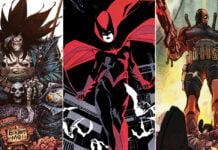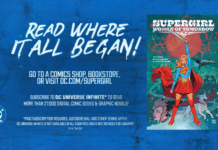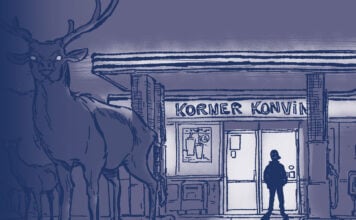This week: Gabriel Hardman delivers a new prestige Black Label series with Batman/Green Arrow/The Question: Arcadia #1. Plus, the fists are flying in DC K.O. #2 and its tie-ins!
Note: the review below may contain spoilers. If you want a quick, spoiler-free buy/pass recommendation on the comics in question, check out the bottom of the article for our final verdict.
 Batman/Green Arrow/The Question: Arcadia #1
Batman/Green Arrow/The Question: Arcadia #1
Writer/Artist: Gabriel Hardman
Colorist: Romulo Fajardo, Jr.
Letterer: Simon Bowland
When Batman/Green Arrow/The Question: Arcadia #1 was first announced by DC Comics back in August, I immediately rushed to the slack channel that we use to coordinate this column with a single word for my esteemed co-writers: dibs.
Which is to say I’ve been excited about this series from the word go. There’s three main reasons. The first is that I’ve been enjoying what the Black Label imprint has become in recent years, having stabilized itself as the home for the publisher’s most complex (Vertigo-esque) prestige stories about its familiar superheroes. Some of my favorite DC Comics of late have been published by Black Label, including Superman: The Kryptonite Spectrum, Resurrection Man: Quantum Karman, Plastic Man No More, and The Boy Wonder.
Next, this book sees writer/artist Gabriel Hardman returning to DC Comics after some time away. Hardman’s most recent comics for the publisher have been excellent, especially the Green Lantern: Earth One books.
Finally, while I don’t have a formalized top 10 list of my favorite DC Comics ever (should I work on that? I should work on that), chances are strong that it would include Mike Grell’s Green Arrow; Dennis O’Neil and Denys Cowan’s The Question (as well as the work that Greg Rucka and co. have done with the character as Rene Montoya); and a whole slew of Batman books. So yeah, I like these characters.
And that is all a means of telling you that my expectations were high for this comic, and, I’m happy to report, this comic did not disappoint, reeling me in from its first page. I’ll get to why it works in a second, but first, the obligatory story recap — there is a mysterious project called Arcadia that Green Arrow and The Question are investigating together. Things get even more complicated when it draws in Batman, who might be at odds with the others.
That’s a nice elevator pitch, to be sure, and it leaves a ton of room for nuance, which is where this book really lives. With that as its overarching plot, this is a comic that feels both localized and global, and, quite possibly deliberately interested in connecting the ways that high-stakes global decision-making by power brokers trickles down to connect with or cause our problems at the community level.
Consider the issues that are three protagonists are grappling with and/or most interested in. A shared interest of all of them is staying in the city where they are from and making a difference. The Question is grappling with the decay of Midwestern Hub City, which is now devoid of structuralized local news (to combat this, he writes a community newsletter) and being used to house exploitative manufacturing due to its lack of governmental oversight.
Batman, meanwhile, is off to attend a climate conference for billionaires in Belize after being inspired by the passion of young environmental activists. While there, we learn that Gotham City (on top of all its murder clowns and whatnot) is also below sea level, putting it on the front line of climate change. We also get another billionaire asking Bruce Wayne how he can still live in Gotham, to which Wayne replies, Gotham is my home.
Finally, we get Oliver Queen newly-returned to Star City, where he is grappling with gentrification. He’s also been ousted from his family’s company for some time, and it’s not really a concern of his, until The Question makes it known the company is a big part of their investigation. I like this choice, because Green Arrow as CEO is my least favorite take on Green Arrow (it just doesn’t make sense!).
It feels like overall this book is attempting an interesting refresh of the global dynamics that we usually see appearing in superhero comics, as well as the way superhero comics engage with media, manufacturing, and perhaps even bad actors themselves. It’s not a preachy book, which I think is to its credit, but it is one grounded in real world issues. That’s another great choice, as the best stories with these characters (at least The Question and Green Arrow) have felt more grounded, more real. Indeed, Mike Grell’s character-defining Green Arrow run does not have a single instance of anyone having a superpower.
So, that’s the big stuff, but on top of that, I also enjoyed how this story was told. One thing that really impressed me about Arcadia #1 was the way it felt dense, complex, and intelligent, while at the same time delivering grandiose action set pieces. This is a comic that alternates corporate espionage with stealth suit Batman dangling from a drone over a jungle.
Hardman’s art with the Fajardo colors is also spectacular, and all three characters get a showpiece splash panel at some point here. Hardman also writes with just enough humor, playing the dynamic between GA and The Question for comic relief at times (“Drink coffee. Call back.), and he populates the book with smart intentional references, or at least one great one to Thomas More’s Utopia.
Finally, the unsung hero of this entire comic is Simon Bowland’s lettering. It’s not easy to juggle three characters with slightly different tones, but his lettering work does it and does it well. He also supports the script’s humor at times (thinking specifically of the caption following the aforementioned coffee line), and he delivers a font for The Question’s diary-styled captioning that both sets it apart and emphasizes it brilliantly.
What it all adds up to here is not just an excellent debut issue, but one that perfectly fits these characters and gives them a tone that it’s become hard to do properly in mainline superhero comics, specifically for characters like The Question and Green Arrow, who don’t often have super long runs to their names, at least not these days.
Verdict: BUY
The Round-Up
I tend to think that superhero event comics are — to borrow a phrase — for the children, and so I try to read them in that context. And I think I’m coming around the video game-ification of the big DC superhero event that DC K.O. is giving us. I felt a little overwhelmed by all the setup in DC K.O. #1, but with that out of the way, I had a lot more fun with DC K.O. #2. And, admittedly, the announcements about some of the crossovers that are coming have also intrigued me and made me see better what this event is all about. DC K.O. #2 comes to us via writer Scott Snyder (with an interlude penned by Joshua Williamson), artist Javi Fernandez (with an interlude drawn by Xermanico), colorist Alejandro Sanchez, and letterer Hassan Otsmane-Elhaou.
- And building off that, what’s driving the cheeky nature of this particular event even more strongly is what’s happening in Superman, which has deployed a seemingly rehabilitated Superboy Prime in an almost Ambush Bug sort of role, making light of the whole thing. I think this is great, and it gives the audience permission to lighten up about the event, too. It’s the anti-grimdark beat in a story about Darkseid, and it’s great. It also just feels like such a natural extension of the things that have happened in this Superman run to date, and it’s always nice when an event tie-in can accomplish that. This week’s Superman #32 is from writer Joshua Williamson, artists Eddy Barrow and Eber Ferreira, colorist Alejandro Sanchez, and letterer Ariana Maher.
- Finally, are you reading The Flash? You really ought to be reading The Flash, which is on its second issue of its own DC K.O. tie-in arc, centered on Max Mercury, Impulse, and the Dark Legion (right out of the pages of the Superman run we JUST talked about). This arc is being written by the team of Mark Waid and Christopher Cantwell, with art by Vasco Georgiev, colors by Matt Herms, and letters by Buddy Beaudoin. We are over on length here, but I will just say, that I think the minimum way to read DC K.O. is to snag the main book (obviously) the Superman tie-ins, and for an extra dose of good times, The Flash.
Miss any of our earlier reviews? Check out our full archive
And check out the Beat’s most recent comics reviews


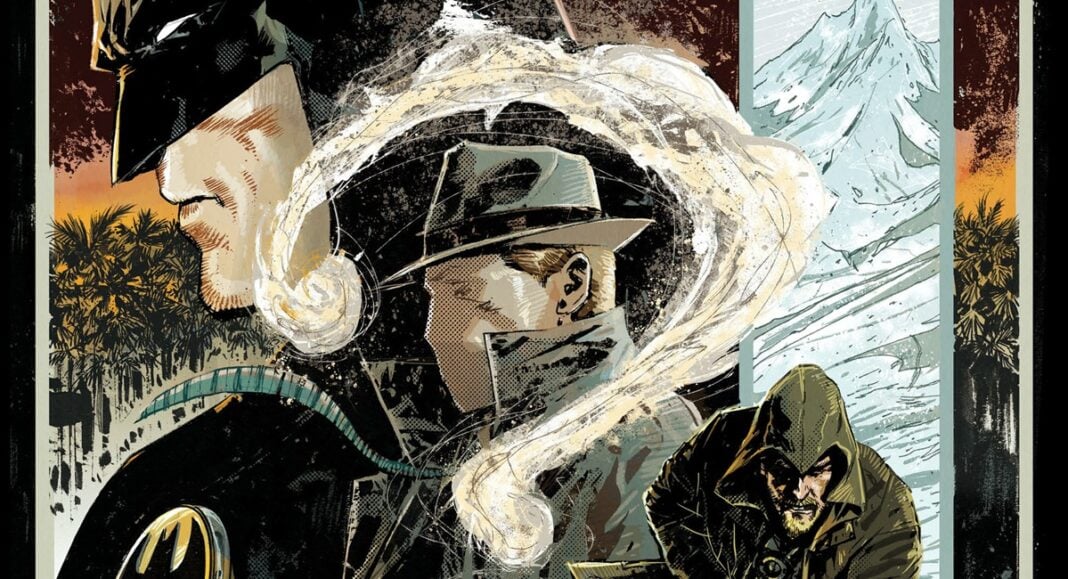
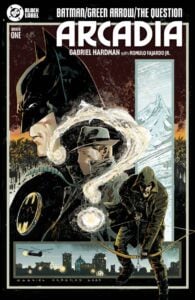 Batman/Green Arrow/The Question: Arcadia #1
Batman/Green Arrow/The Question: Arcadia #1
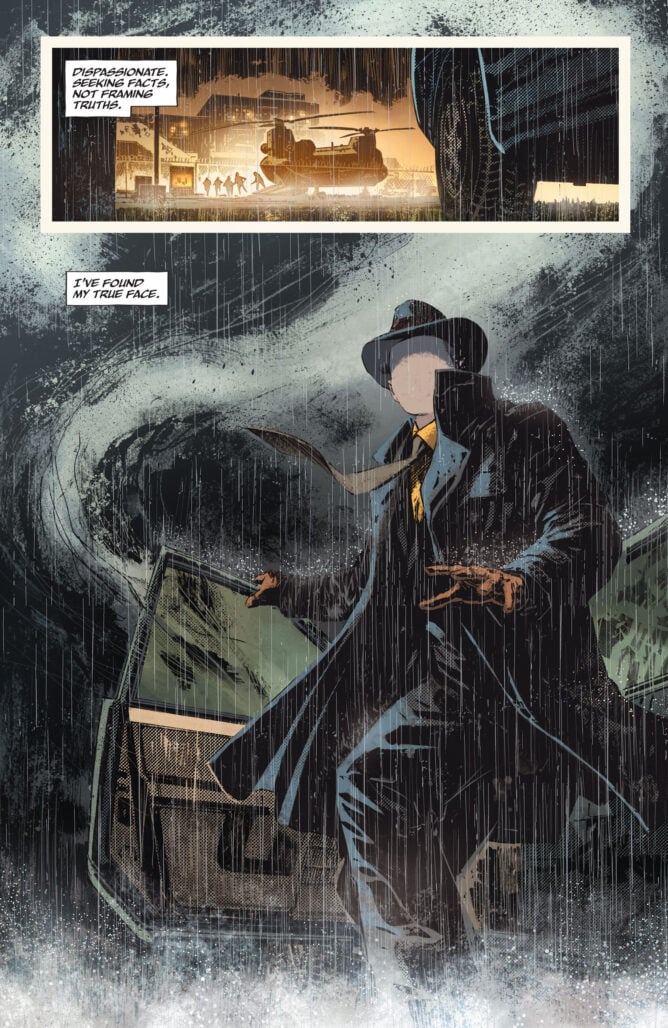
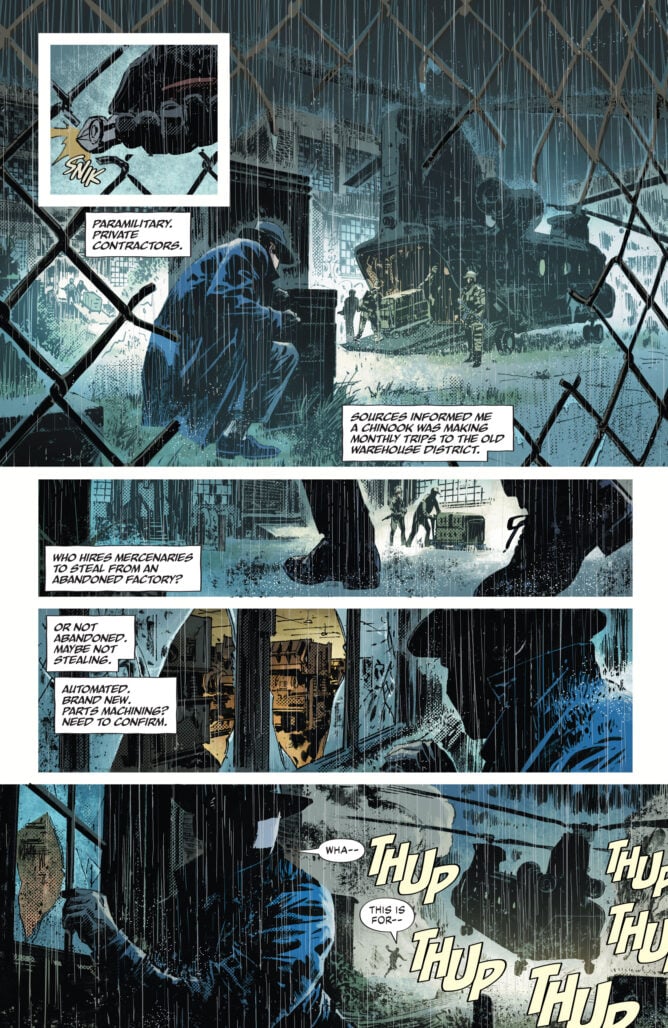

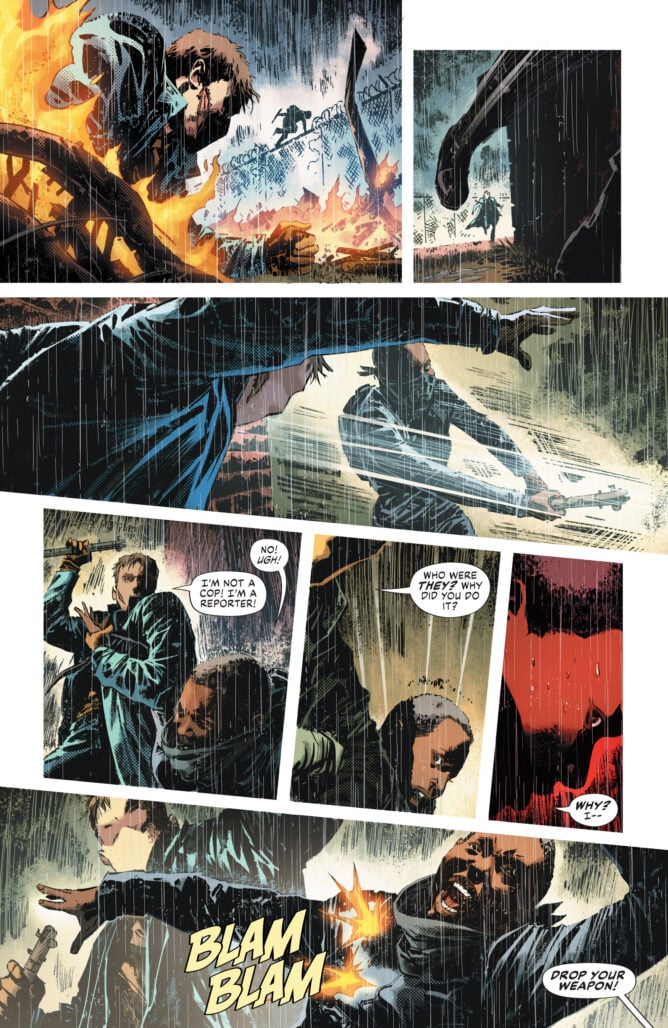
 I tend to think that superhero event comics are — to borrow a phrase —
I tend to think that superhero event comics are — to borrow a phrase — 